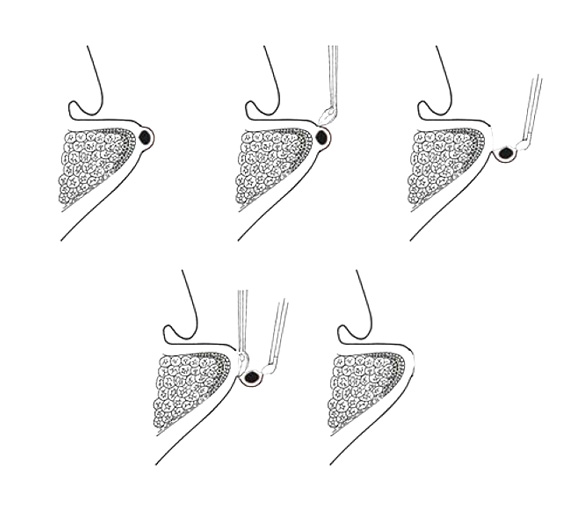What is microlaryngeal surgery?
It’s performed under general anesthesia through the laryngoscope inserted into the mouth. It requires a sophisticated surgery technique to remove laryngeal diseases by monitoring the screen amplified for the operation. To preserve the most important vocal folds layer and to remove the superficial membrane of the wounded area, submucosal infusion technique and Endoscopic microfracture surgery technique are being in use.
Commonly there are no complications found but minor complications like small bleeding inside the mouth or pain can be accompanied post-operatively but all temporarily. Also, temporarily the voice quality could get worsened but soon it heals and recovers naturally.
Submucosal infusion technique
The submucosal infusion is a technique which recovers the voice by separating the mucous membrane with lesion and the lamina propria of the vocal folds and preserving the lamina propria when performing the surgery.
 Diagram of submucosal infusion technique
Diagram of submucosal infusion technique
1. 2cc Luer-Lock 27G microscopic needle
2. 1:20000 epineprine with sterile saline
Endoscopic micro mini-flap surgery
As the microstructure of the vocal folds and the process of healing in benign vocal fold diseases, have been demonstrated,
studies have proved the significance of preserving the lamina propria of the vocal folds and the importance of vocal rest and
rehabilitation (Influence of phonation on basement membrane zone recovery after phonomicrosurgery: a canine model.
Annals of Otology, Rhinology & Laryngology 2000;109:658-666 in collaboration with Hyung-tae Kim)
As a result of these studies, surgical operations of the vocal folds including the micro mini-flap surgery which can bring the
voice to original condition have been developed.
Using the micro mini-flap surgery, positive vocal fold surgeries which could not be performed in professional vocalists or
singers are now being performed as it enables to draw the fast recovery and voice improvement.
 Microscopic diagram of micro mini-flap surgery
Microscopic diagram of micro mini-flap surgery

